Dalmatian Wine Comprehensive Guide
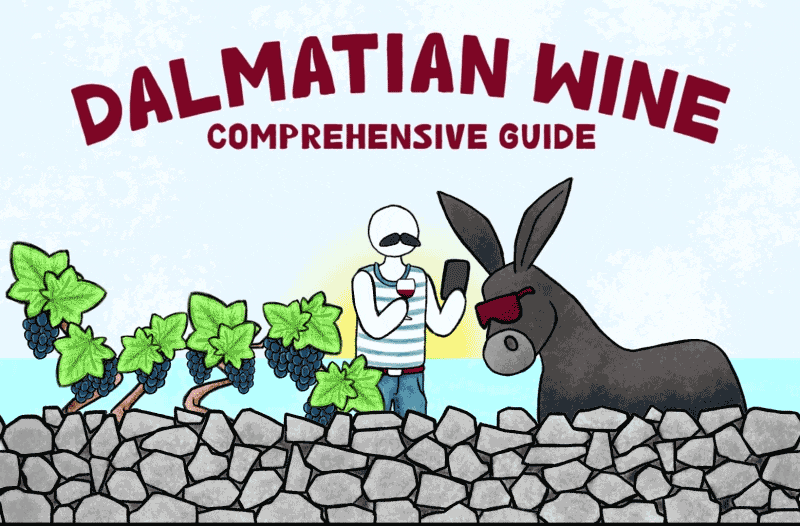 Dalmatian wine, with its rich history and distinctive flavours, holds a special place in the world of winemaking. Originating from the stunning Dalmatian coast in Croatia, this wine has gained global recognition for its unique characteristics.
Dalmatian wine, with its rich history and distinctive flavours, holds a special place in the world of winemaking. Originating from the stunning Dalmatian coast in Croatia, this wine has gained global recognition for its unique characteristics.
Introduction
Dalmatia is home to several wine regions, each adding to the diversity of Dalmatian wine. Stretching from the Zadar on the North to the Konavle region south of Dubrovnik, each area possesses its unique terroir, shaping the grape varieties that thrive there.
Where is the Dalmatia wine region in Croatia?
The Dalmatian wine region is located along the stunning Dalmatian coast in Croatia. Located on the east shore of the Adriatic Sea, on the very south of Croatia, Dalmatia includes hundreds of islands as well as mountains. Main cities are Split, Dubrovnik, Šibenik and Zadar.
Dalmatia is a typical Mediterranean region abundant in local and indigenous wine varieties and a long tradition of wine growing. Croatian first protected vineyard positions – Dingač and Postup, are located on the Dalmatian peninsula Pelješac.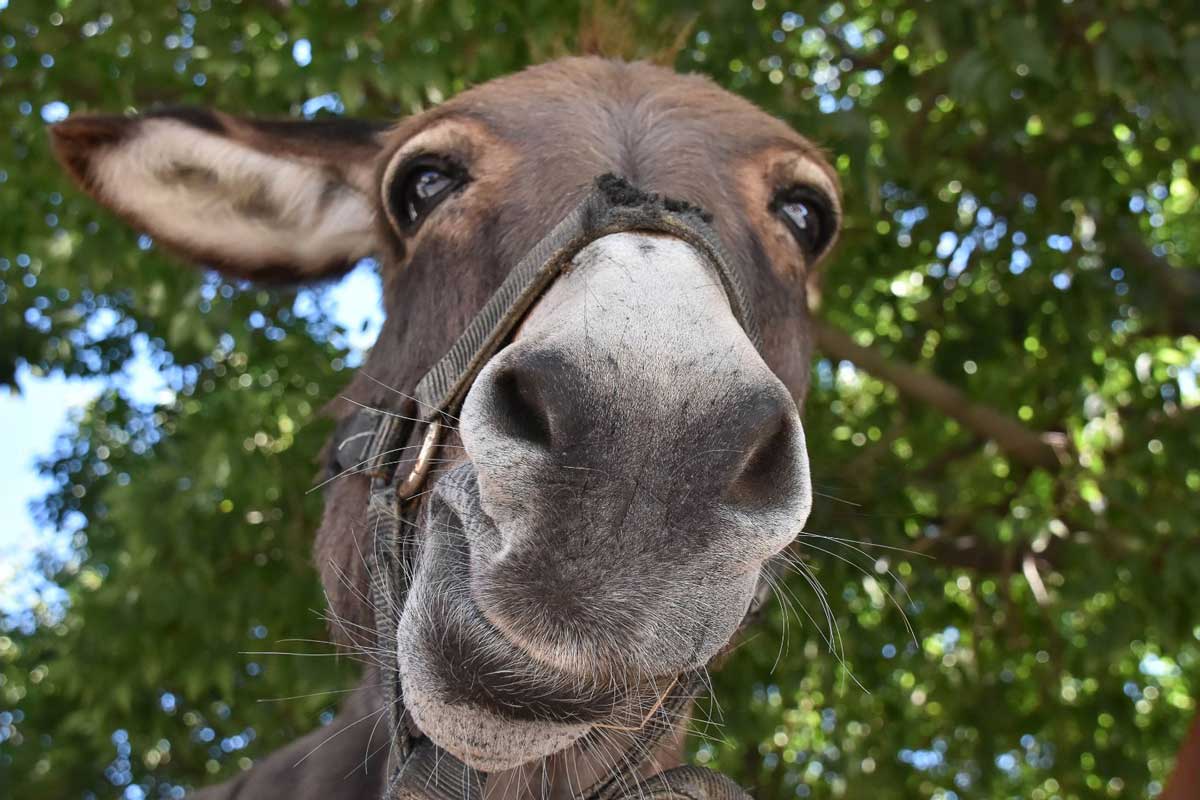
Brief history of Dalmatian wine
The entire history of Dalmatia is intricately tied to vines, with political, economic, and even artistic dimensions. Viticulture and winemaking have long stood as the region’s most crucial industry and the foundational pillar of its economy, shaping the destiny of the population in the middle Adriatic area. The decision of Dalmatians to cultivate vines was far from arbitrary, as they recognised that, on limited arable land, nothing proved more economically viable than grape cultivation. The seemingly infertile soil became economically lucrative when transformed into vineyards. The presence of the vine in Dalmatia dates back to ancient times, with scientists suggesting that grapes were cultivated and wine produced there as early as 3,800 years ago by the original inhabitants known as the Illyrians.
The significant growth of viticulture in Dalmatia is intertwined with establishing the first ancient Greek cities on the Adriatic islands. Following the Greeks, the Romans arrived in Dalmatia to discover an already well-established viticulture scene. Given that vine cultivation in the Roman Empire reached a commendable standard, the settlers further enhanced the existing viticulture, sharing their expertise with the local population. Even throughout the Middle Ages, viticulture and wine production remained the primary economic activity in Dalmatia.
The most challenging era in Dalmatia’s viticultural history occurred during the phylloxera outbreak and the subsequent decline of vineyards from 1894 to 1918. This led to a significant emigration of Dalmatian residents as many Dalmatians relied heavily on vine-related activities for their livelihoods. Dalmatia stands out as the Croatian region where vines exerted the most profound influence on the lives of its inhabitants.
Importance of Dalmatian Wine in the Wine Industry
The greatest importance of Dalmatian wines is achieved from the point of view of biodiversity. Dalmatia is a region with hundreds of autochthonous grape varieties. Some of them are critically endangered, others are saved from extinction.
Some of them spread around the world and are known under new names. The most prominent case is the Californian Zinfandel, whose genetic ancestor in Dalmatia is called Tribidrag (or Crljenak).
However, it cannot be claimed that Dalmatian wines are globally significant in economic terms. Part of the reason lies in the fact that overall wine production in Dalmatia is negligible in the global context. Dalmatian wineries have long accepted that they cannot compete in the global market in terms of quantity or price, but they can with quality and unique character.
Many foreign tourists, who especially like to spend their summer holidays on the Dalmatian coast, are usually surprised by the high quality of Dalmatian wines.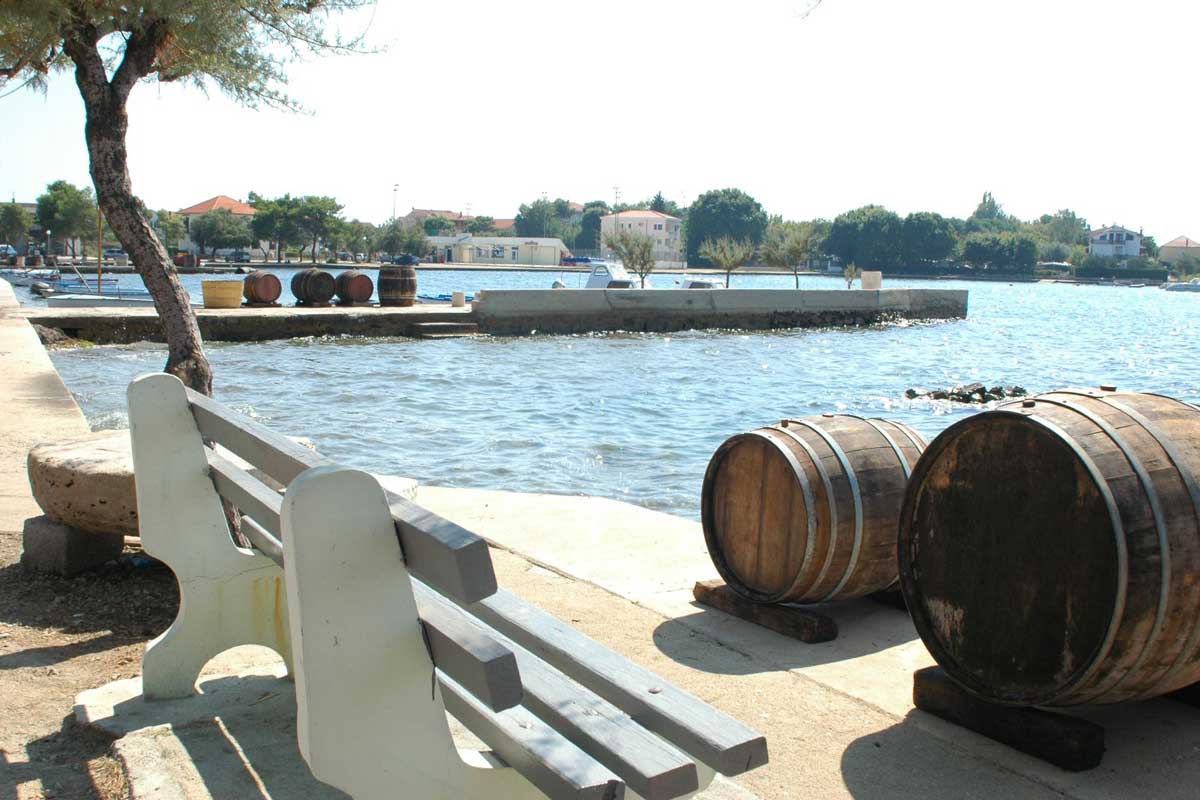
Dalmatian Wine Regions
Dalmatia is one of the four wine regions in Croatia and includes everything from Zadar and its hinterland to Konavle in the extreme south of the country. Dalmatia has some of the most beautiful Croatian wine-growing locations, which include hard-to-reach and demanding slopes but where the best quality vines grow.
Overview of Dalmatian wine regions and subregions
Historically, Dalmatia can be observed in three separate regions conditioned by the gravitational influence of its larger cities:
- Zadar and Šibenik influence to North Dalmatia
- Split Influencing Central Dalmatia
- Dubrovnik influencing South Dalmatia
However, from a wine perspective, it is useful to distinguish another Dalmatian region: Dalmatinska zagora (Dalmatian Hinterland)In fact, it is more accurate to distinguish between Northern Dalmatia, Central/South Dalmatia, and Dalmatian Hinterland. This division is hardly enough to specify all the intricacies of particular places and unique terroir but provides a general insight into the wonders of Dalmatian wines.
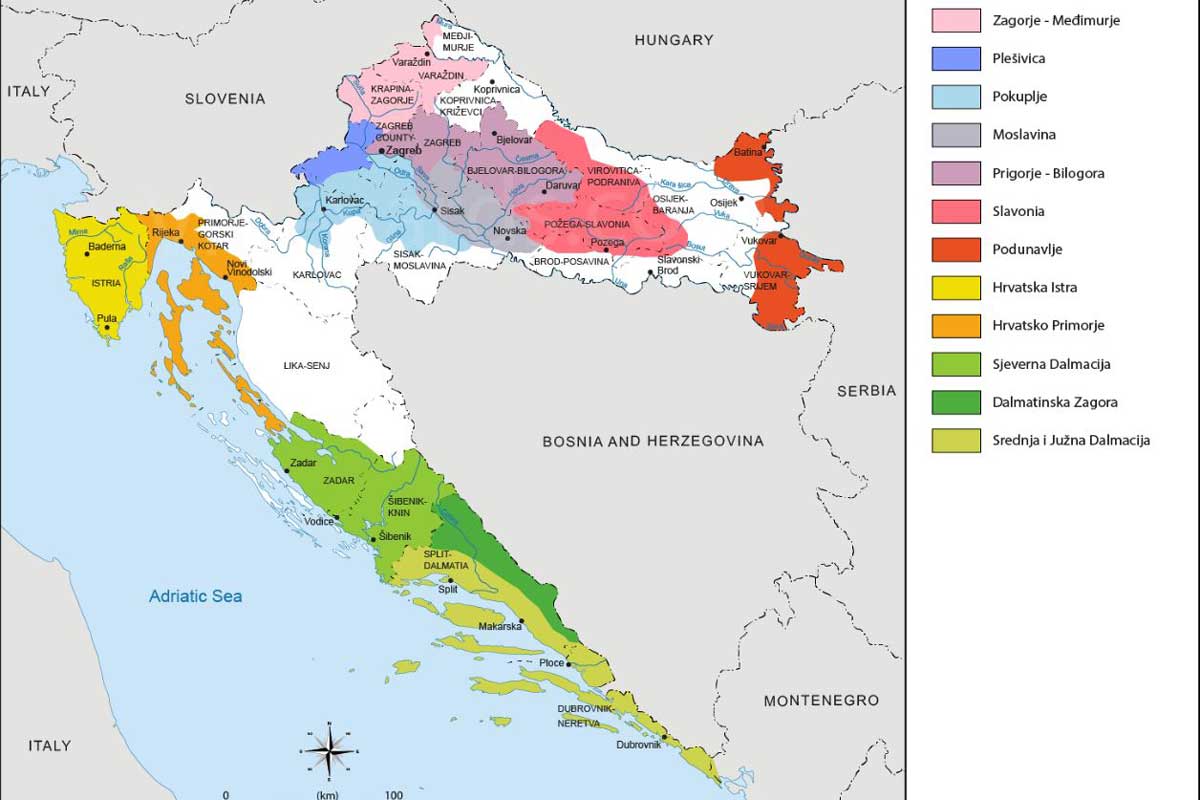
South Dalmatia
The most important sub-regions of South Dalmatia:
- Pelješac peninsula vineyards
- Korčula island vineyards
- Konavle vineyards
- Komarna vineyards
- Neretva vineyards
- Lastovo island vineyard
The climate across the entire region follows the classic Mediterranean pattern, albeit notably wetter and slightly cooler compared to the islands of central Dalmatia. This contrast significantly influences the wine style in this area, even when dealing with the same grape varieties like Plavac mali or Maraština.
Typical representatives of red varieties:
- Plavac Mali
- Tribidrag (Crljenak)
- Plavina
Typical representatives of white varieties
- Pošip
- Rukatac (Maraština)
- Dubrovačka Malvasija
- Grk
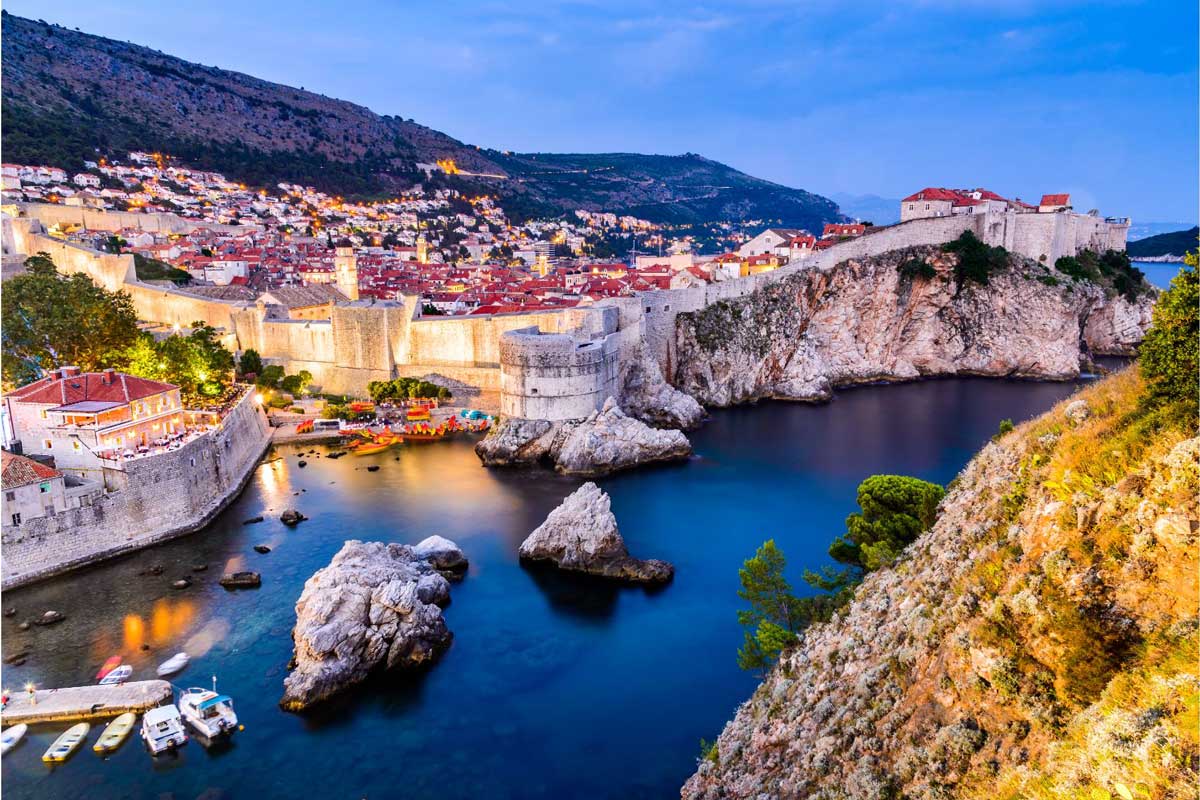
The primary factor contributing to this divergence is the microclimate governing the Pelješac interior. The higher altitude introduces an almost continental climate, marked by chilly nights and spring frosts, with reduced overall sun exposure. Additionally, Plavac mali thrives in nutrient-poor soils, and the inland fields boast deep and rich soil compositions.
Traditionally, the most widespread and thus the most significant white variety in Dalmatia as a whole is Rukatac or Maraština. However, today, the most represented white variety in Dalmatia, especially in the south, is Pošip. Pošip spread from the island of Korčula, where it was neglected and on the verge of extinction until its potential was not recognised. Although they are related to a limited cultivation area, Grk and Malvasija Dubrovačka represent an important potential of Southern Dalmatia. The Greek from Lumbarda on the island of Korčula received its protected mark of authenticity. Malvasia Dubrovnik is genetically identical to the Italian variety Malvasia delle Lipari, where it is most often made as a sweet wine from dried grapes, while in the Dubrovnik area, it is an intoxicating but dry, white wine.
Central Dalmatia
The most important sub-regions of Central Dalmatia:
- Brač island vineyards
- Vis island vineyards
- Hvar island vineyards
- Kaštela-Trogir vineyards
- Omiš-Makarska vineyards
- Šolta island vineyards
The climate in the region is typically Mediterranean, characterised by minimal rainfall and particularly hot, dry summers. The soil comprises various clay and brownish coastal soils, predominantly on limestone rocks. However, more crucial than the overall conditions of the region are the specific attributes of the best locations, such as Ivan Dolac and Sveta Nedjelja on the island of Hvar, Murvica and Stipančić on the island of Brač, among others.
A shared feature of these prime locations is their positioning on slopes in close proximity to the sea. This positioning exposes them to ample sunlight while benefiting from the stabilising influence of the sea, preventing drastic temperature fluctuations. Their openness to the sea ensures a consistent airflow crucial for grape health, although, with changing climatic conditions, there is a rising trend of vineyards being established on certain northern slopes.
All the exceptional wine-growing locations in Dalmatia share a common soil type. Typically, a thin layer of fertile soil rests upon limestone rocks. While sufficient for vine survival, this setup limits yields, concentrating quality naturally without human intervention, resulting in small berries and modest yields.
Typical representatives of red varieties:
- Plavac Mali
- Tribidrag (Crljenak)
Typical representatives of white varieties
- Pošip
- Rukatac (Maraština)
- Vugava
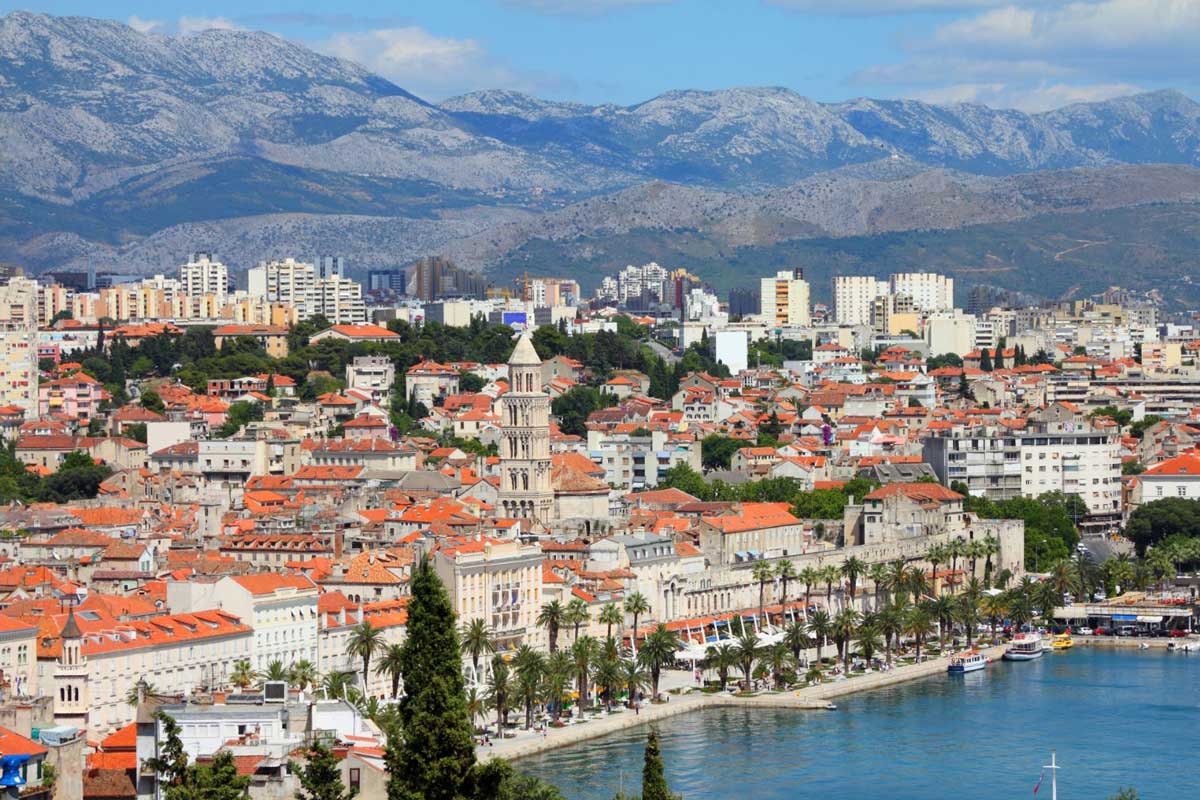
The aromas of Plavac are highly distinctive. Wines crafted from Plavac mali often exhibit a certain sweetness, particularly in the aftertaste. This sweetness doesn’t arise from residual sugar but is a consequence of the degree of phenolic maturity and the type of tannins inherent to Plavac.
Vugava holds significance as a key variety in this region, almost exclusively cultivated on the island of Vis today, with a few notable exceptions. In the past, Vugava wines enjoyed widespread popularity, at the time attributed to their inherent ability to accumulate sugar, resulting in a remarkably high alcohol content, which served as a natural preservative, enabling these wines to be transported over extended distances and stored for prolonged periods.
Presently, the preferences have shifted, with a focus on freshness and drinkability over robust qualities. However, beyond its strength, Vugava boasts other undeniable attributes, including a refined aroma and a dense, rich extract, leading to a resurgence in its popularity.This area is naturally rich in numerous local autochthonous varieties and genetic diversity. It also abounds with a handful of different styles conditioned by cultural and microclimatic characteristics.
North Dalmatia
The most important sub-regions of North Dalmatia:
- Primošten vineyards
- Pirovac-Skradin vineyards
- Promina vineyards
- Šibenik vineyards
- Drniš vineyards
- Zadar-Biograd vineyards
- Benkovac-Stankovci vineyards
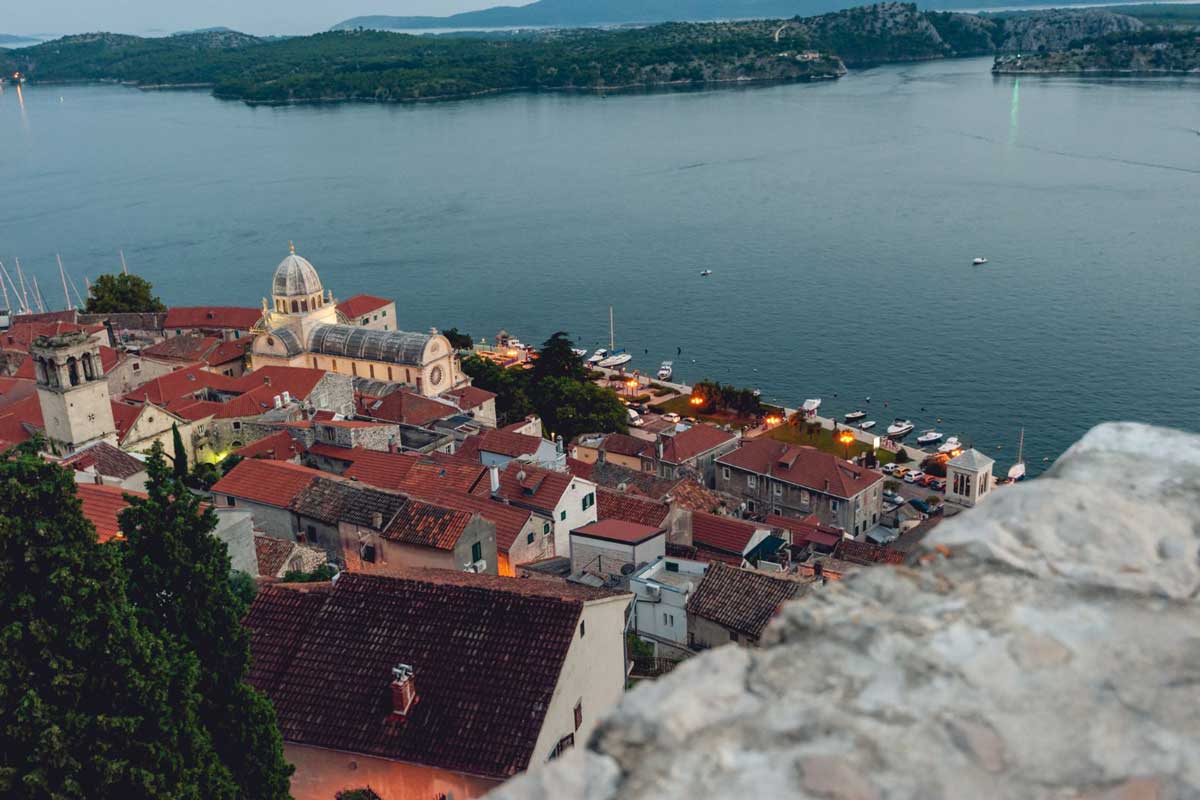
What sets this region apart is the remarkable balance of acids in all its wines, contrary to the conventional expectations of Dalmatian wines. The area experiences abundant radiant heat, strong winds, and a more noticeable continental influence marked by cool nights and diurnal temperature fluctuations.
While full-bodied and tannic red wines are far from absent, Northern Dalmatia offers greater possibilities for achieving well-balanced wines than Central and southern Dalmatia. Even red wines often exhibit elegance and delicacy, preserving a refreshing and drinkable quality.
Typical representatives of red varieties:
- Plavina
- Babić
Typical representatives of white varieties
- Debit
- Maraština
Babić is perhaps the most significant variety of northern Dalmatia. Like Plavac Mali, it has the quality to achieve excellent results in the harsh and unfriendly conditions of the rocky soils, with good exposure to the sun and low yields. Compared to Plavac, it perfectly preserves higher acids that balance the strong body and higher alcohols. Ageing in oak barrels suits it, further enriching the aroma and taming the tannins. The number of high-quality Babić wines on the market is increasing and this variety is starting to show the potential it was known to be capable of.
Dalmatian Hinterland
The most important sub-regions of Dalmatian Hinterland:
- Imotski vineyards
- Vrgorac vineyards
- Sinj-Vrlika vineyards
This region is home to numerous local, indigenous grape varieties that have steadfastly retained their authentic character. Simultaneously, the cultivation of increasingly popular foreign varieties like Cabernet Sauvignon, Merlot, and Chardonnay is rising.
The conditions for vine cultivation mirror those in the rest of Dalmatia. Limestone rocks form the primary substrate, often accompanied by various types of clay and other soils. The climate is distinctive, exhibiting a dry Mediterranean character in the summer with hot days, often surpassing coastal temperatures. In contrast, other seasons, particularly autumn and winter, lean more towards a continental climate, featuring spring frosts, creating a stylistically significant difference in the wines compared to coastal areas.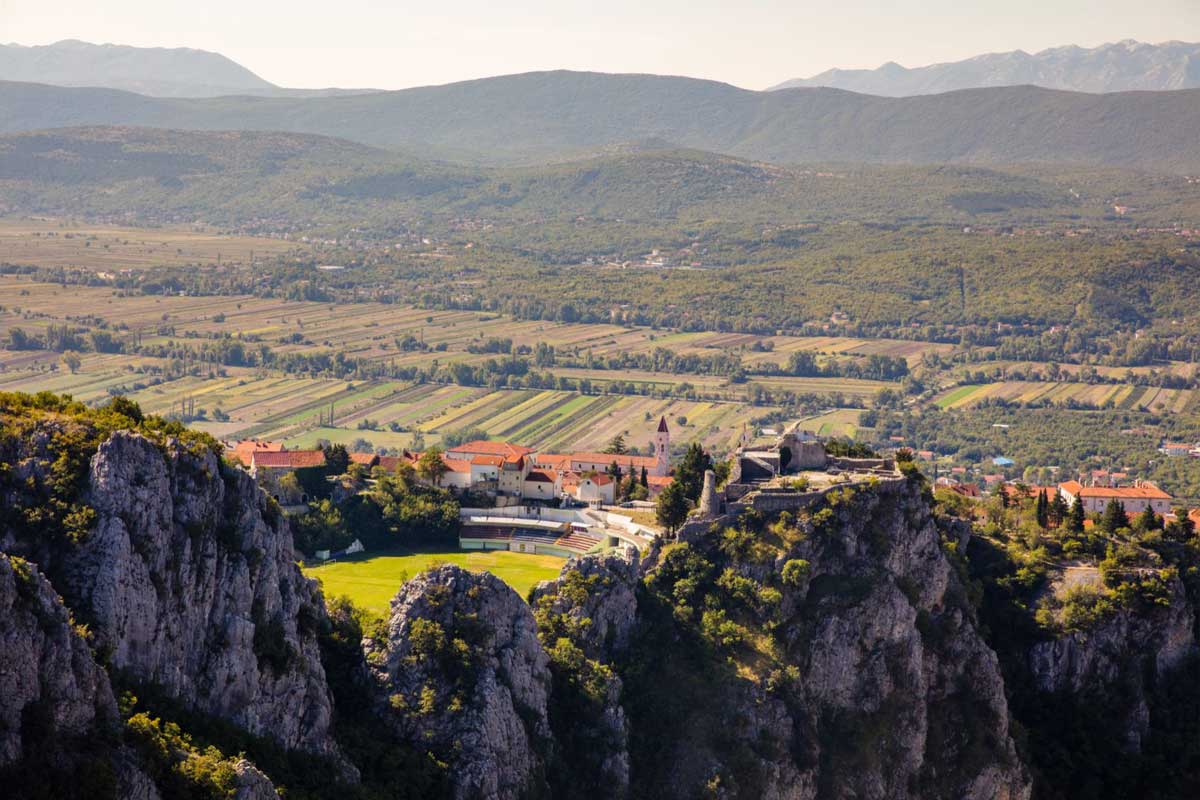
Typical representatives of red varieties:
- Trnjak
- Vranac
- Plavina
Typical representatives of white varieties
- Kujundžuša
- Zlatarica
- Žilavka
- Medna
Bordeaux varieties thrive in this region, producing outstanding results, yet the true essence lies within the indigenous grape varieties. Kujundžuša, though challenging to pronounce, proves exceptionally easy to enjoy. With mild alcohol content and gentle acidity, it tends to be light and drinkable. The aromas harmonise seamlessly with the wine’s body, offering a pleasant and delicate experience, often featuring light citrus fruit notes supported by moderate minerality.
In contrast, Trnjak is a grape variety suited for robust red wines, with aromatic profiles leaning towards blackberries like raspberries and blackberries. Despite its frequently strong body and elevated alcohol content, Trnjak boasts a harmonious and smooth taste, free from astringent tannins. It also complements maturation in wooden barrels, enhancing its complexity.
Notable Dalmatian Wine Varietals
In contrast to other Croatian wine regions, Dalmatia stands out with a prevalence of red grape varieties that flourish on challenging and hard-to-reach terrain. Plavac mali, among the red varieties, and Pošip, among the white varieties, serve as the backbone of Dalmatian winemaking.
However, what captivates the attention of many enthusiasts is the extensive array of indigenous varieties such as Kujundžuša, Plavina, Maraština, Bogdanuša, Debit, and others. Dalmatian winemakers increasingly recognise the potential of these autochthonous varieties.
Plavac Mali – The Bold Red Wine Grape
Plavac Mali holds the unofficial title of the Croatian red wine king, deeply embedded in the cultural heritage of generations. Its robust nature has shaped wine preferences, with a perception of high-quality red wine characterised by full-bodied richness, expressive tannins, and elevated alcohol content, often accompanied by lower acidity.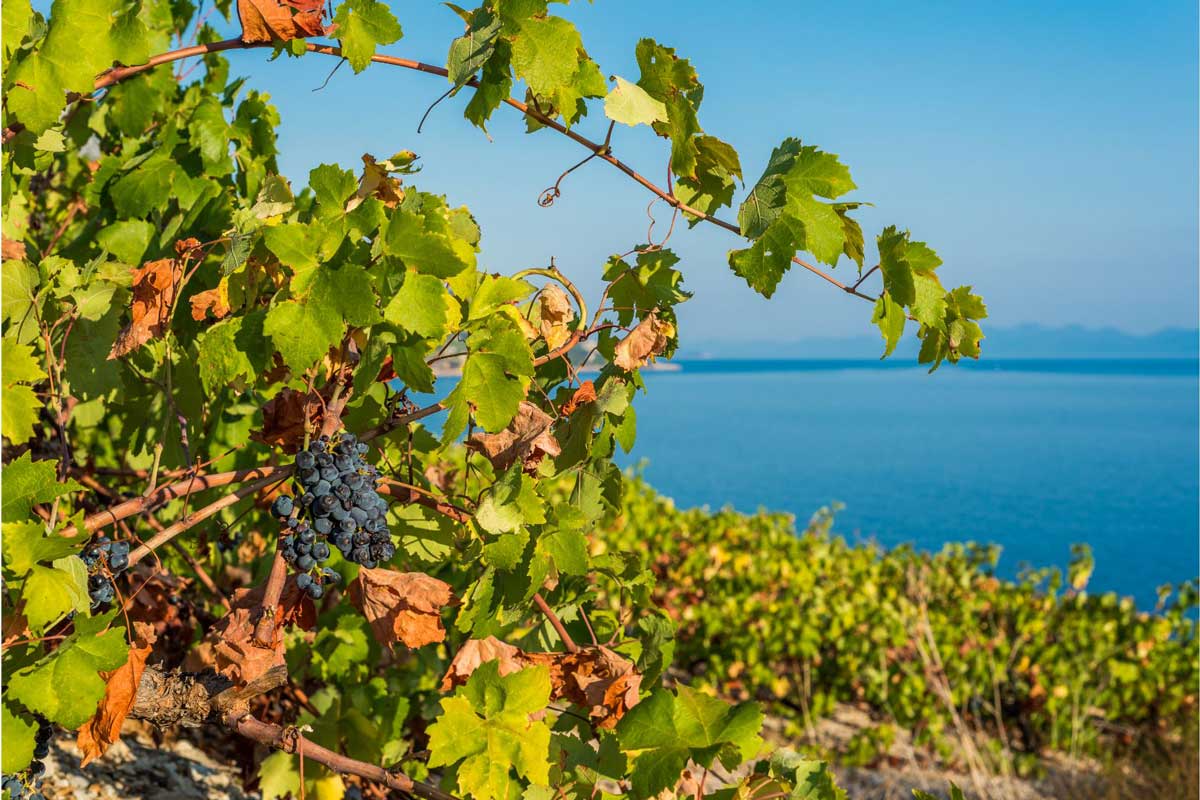
Originating as an autochthonous variety in central and southern Dalmatia, Plavac Mali’s lineage is traced back to the indigenous Tribidrag (or Crljenak), better known as Zinfandel, discovered through scientific collaboration.
Well-suited to the hot Mediterranean climate and impoverished soil, Plavac Mali thrives, with grapes from southern sun-drenched slopes producing full-bodied wines of exceptional quality and longevity. In contrast, grapes from flatter terrains, colloquially termed “from the field” in Dalmatia, yield wines with a lighter body and, conditionally put, considered of “inferior” quality. Fertility is also significant, being regular yet variable, ranging from abundant to modest.
Exceptional locations showcase Plavac Mali’s renowned characteristics. Typically rich in tannins, sometimes astringent, and with high alcohol content ranging from 13% to 16%, Plavac Mali’s distinctive aroma combines sweet notes of dry or baked fruits like sour cherries, cherries, or blueberries, often accompanied by hints of carob, dried figs, and sage.
Traditional ageing in wooden barrels enhances the aromatic profile with additional spicy sensations, rounding the tannin structure for a softer, palatable experience. While Plavac Mali is almost exclusively grown in Dalmatia, limited experiments in Kvarner, Herzegovina, and Northern Macedonia have been noted.
Despite its popularity, Plavac Mali poses challenges for winemakers due to its uneven ripening properties, resulting in grape clusters with both green berries and raisins. If allowed to fully ripen, tannins and sugars intensify, but acidity diminishes, presenting a winemaking challenge.
The ripest Plavac Mali grapes flourish in Dingač, Postup, Trstenik, Mili on the Pelješac peninsula, Ivan Dolac, Sveta Nedjelja on Hvar, and Murvica and Stipančić on Brač. However, emerging locations like Komarna, the islands of Vis and Korčula, and the northern Dalmatian site of Jadrtovac are gaining recognition for providing an ideal climate for Plavac Mali, especially for a balanced expression that avoids overripeness.
Tribidrag – The original Zinfandel
Originally identified as Tribidrag or Crljenak, Zinfandel shares a compelling story deeply intertwined with its Croatian roots. Scientific collaboration has unveiled its ancestral connection to the Croatian indigenous variety Tribidrag. In fact, it’s genetically the same variety. This variety has found a second home in California, particularly in regions like Napa and Sonoma, where it has gained fame for producing bold and fruit-forward red wines.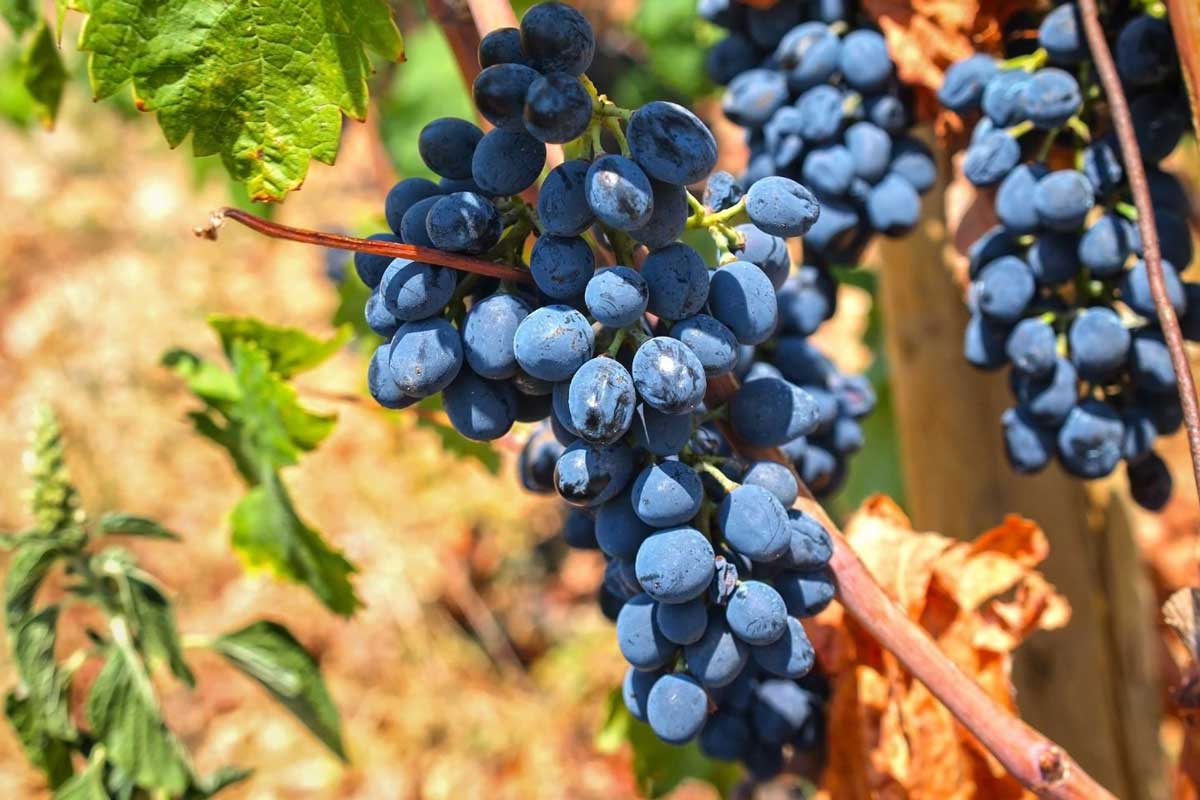
Thriving in various climates, Zinfandel has adapted remarkably well to different terroirs. Its grapes, known for their rich and juicy qualities, yield wines that often display a wide spectrum of flavours. The distinctive aroma profile features lush notes of dark berries, black cherries, and sometimes even a hint of peppery spice.
Zinfandel’s adaptability extends to winemaking styles, allowing for expressions ranging from robust and full-bodied to more elegant and nuanced. Compared to Plavac, Tribidrag is more fruity, especially in the direction of red and black berries, mostly without herbal, but sometimes with spicy and earthy moments. The tannin structure of Tribidrag is never so pronounced, and the freshness is normally present as a counterweight to the powerful extract and alcohols.
As a testament to its heritage, Zinfandel continues to captivate wine enthusiasts with its intriguing backstory and the remarkable diversity it offers in the glass. Whether enjoyed young and vibrant or aged to develop more complex layers, Zinfandel is a true testament to the rich history and evolving winemaking world.
Babić – Resilience Redefined
Babić grapes display a range in bunch sizes, with wines from smaller clusters often containing more sugar, resulting in higher alcohol content and a fuller-bodied profile. Characterised by medium-sized round berries, Babić is a dark blue grape with thin, soft skin and juicy flesh.
What distinguishes Babić from Plavac is its remarkable ability to retain acidity, contributing to the creation of vibrant and lively wines. The secret to crafting the perfect bottle lies in achieving a delicate equilibrium between fullness and ripeness, highlighting specific marasca cherry fruitiness and mineral elegance.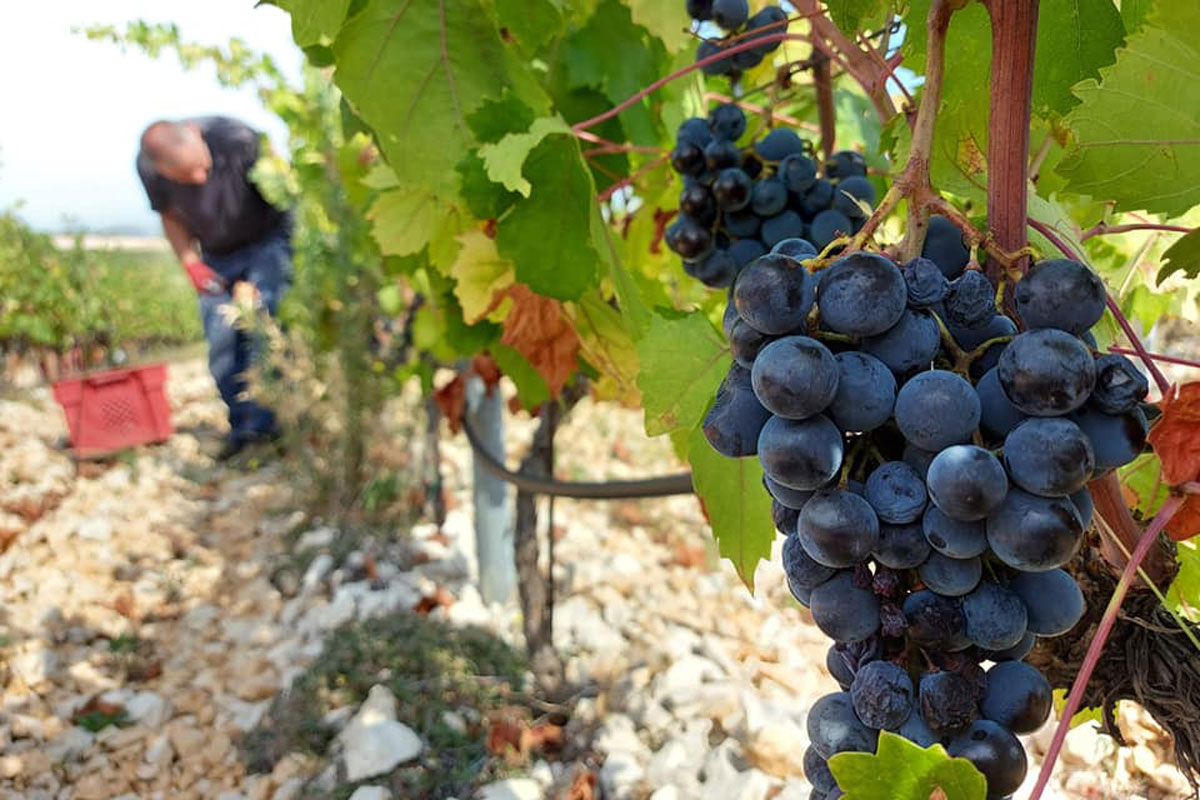
Renowned for its rich and complex flavour, Babić wine is known for aromatic notes of red fruits, particularly marasca cherry, intertwined with spices and subtle earthy undertones. It offers a delightful fusion of flavours on the palate, often featuring dark fruits and hints of Mediterranean herbs.
Babić thrives under ample sunlight for ripening and flourishes in extremely unfavourable and nutrient-poor soil. The historically acclaimed Bucavac remains the most famous location for growing Babić. However, impressive results are also achieved in other positions, such as Jadrtovac near Šibenik.
In contrast to Plavac Mali, which has spread across all parts of Dalmatia, Babić is distinctly associated with the Northern Dalmatia region, particularly around Primošten and Šibenik.
Plavina – Striking Mediterranean Harmony
Once the most prevalent red grape varieties in Dalmatia, second only to Plavac Mali, Plavina (or Plavka) continues to have a significant presence in the region.
In contrast to other prominent red grape varieties in Dalmatia that tend to lack or have milder acids, Plavina stands out for its distinct profile. Wines crafted from Plavina consistently exhibit a fresh character, featuring gentle to medium-strong alcohols and unexpectedly mild tannins. This unique combination makes Plavina wines exceptionally soft and highly drinkable.
Thanks to its specific characteristics, Plavina frequently finds its place in blends, acting as a perfect balancing element for heavier Dalmatian red wines. Its inherent softness and freshness contribute to the overall harmony of these blends.
Pošip – A Unique White Wine Variety
Pošip, a renowned Croatian white wine, is crafted from the indigenous white grapes of the Pošip variety. Cultivated for centuries by local families of wine producers in the vineyards of Smokvica and Čara on the picturesque island of Korčula in Croatia, Pošip has evolved into the first Croatian white wine with protected geographical origin—a true “from zero to hero” narrative.
Historical records indicate that Pošip was initially discovered as a wild vine on the island of Korčula. From its humble beginnings, it has transformed into the most widely cultivated variety in Dalmatia, overcoming its initial obscurity.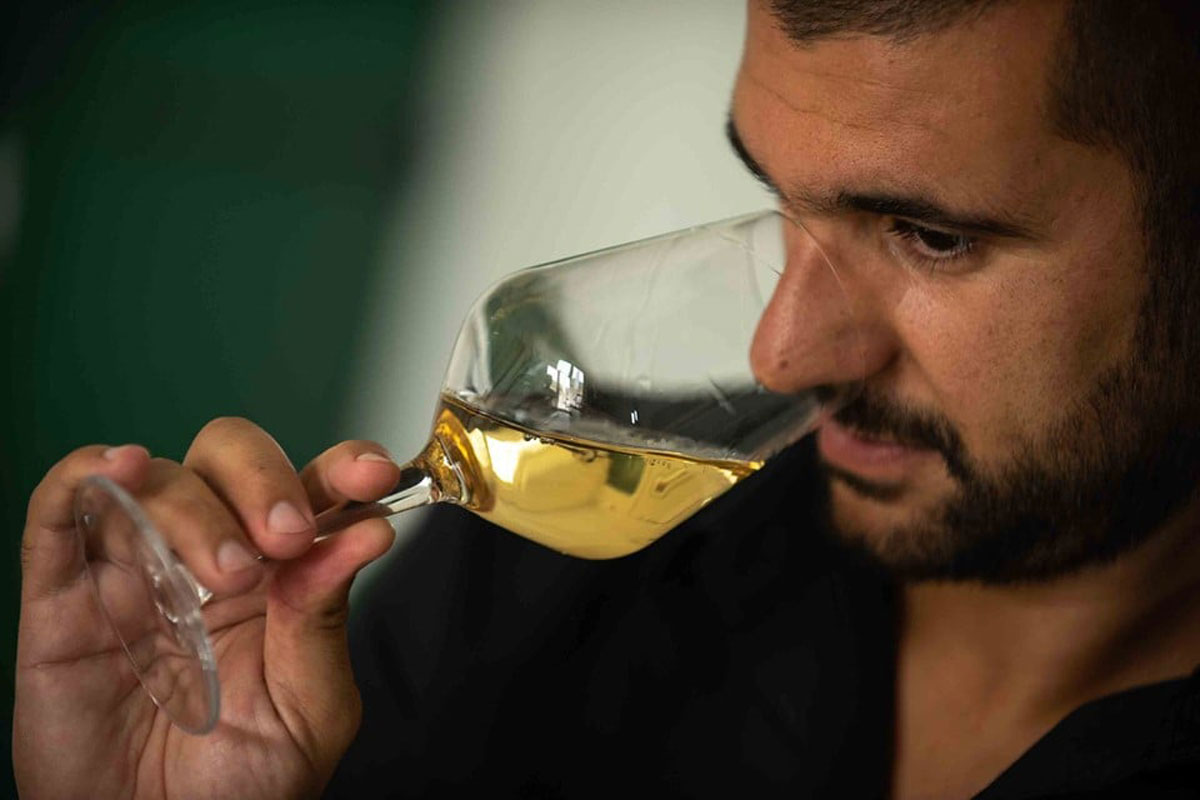
Pošip wines encompass a spectrum, ranging from fresh to traditionally aged. This grape variety, known for its structural character, particularly thrives when aged in wooden barrels. Pošip wines can be produced in a dry style or with residual sugar, making them suitable for dessert wine.
As a dry, aromatic wine with notes of dried apricots, figs, and medicinal herbs, displaying a golden yellow hue and an alcohol content between 12.5% and 13.5%, Pošip exhibits remarkable ageing potential.While Pošip is now cultivated throughout Dalmatia, yielding extraordinary results in various locations, its most esteemed terroirs remain rooted in two specific areas on Korčula island —Čara and Smokvica.
Maraština – Dalmatia’s True Tradition
In the past, Maraština was the most widespread white variety in Dalmatia, which is the title Pošip holds today. Experts have proven that it is actually a variety of Malvasia lunga or Malvasia del Chianti, but it has been present in Dalmatia before official records, so it is definitely an authentic expression of white Dalmatia.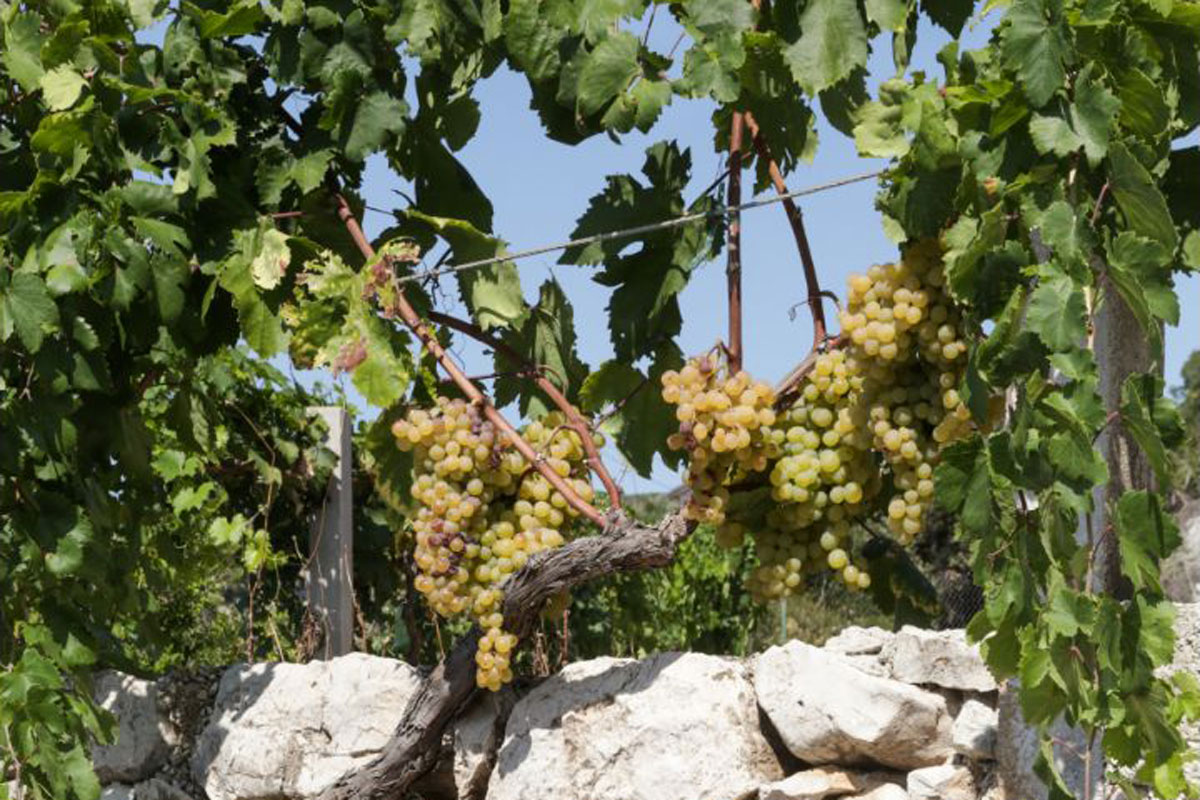
Today, winemakers try to get various styles of wine from Maraština, so white wines and amber wines are produced from their grapes as a kind of reinterpretation of tradition. Maraština grapes are sweet when ripe, and their berries have a tougher skin, so winemakers often leave them to dry in the wind to make aromatic sweet Prošek.
It is certain that Maraština achieves high analytical parameters, so it is grateful for the production of different types of wine. Along with stone fruits, citrus fruits, and Mediterranean herbs, the best Maraština wines express salinity in the finish as a mineral signature of their origin.
Although widespread across Dalmatia, the finest examples of Maraština are in Northern Dalmatia, with a couple of notable exceptions.
Debit – A Refreshing Twist on an Old Classic
Wines crafted from the Debit grape are characterised by a harmonious and easily drinkable profile, making it a versatile variety suitable for producing sparkling wines as well. Predominantly used for crafting dry wines with heightened freshness, lightness, and a delicate effervescence, Debit also demonstrates significant potential in the realm of dessert wines. Typically, wines from this variety boast an alcohol content of up to 12.5 per cent.
While Debit is one of the most prevalent grape varieties in Dalmatia, its prominence is particularly notable in the locations of Northern Dalmatia, where it takes the lead. Historically, Debit thrived in the skeletal, well-drained soils of karst plains and mountain slopes, specifically in areas like Promina. More recently, cultivation has expanded to include karst fields.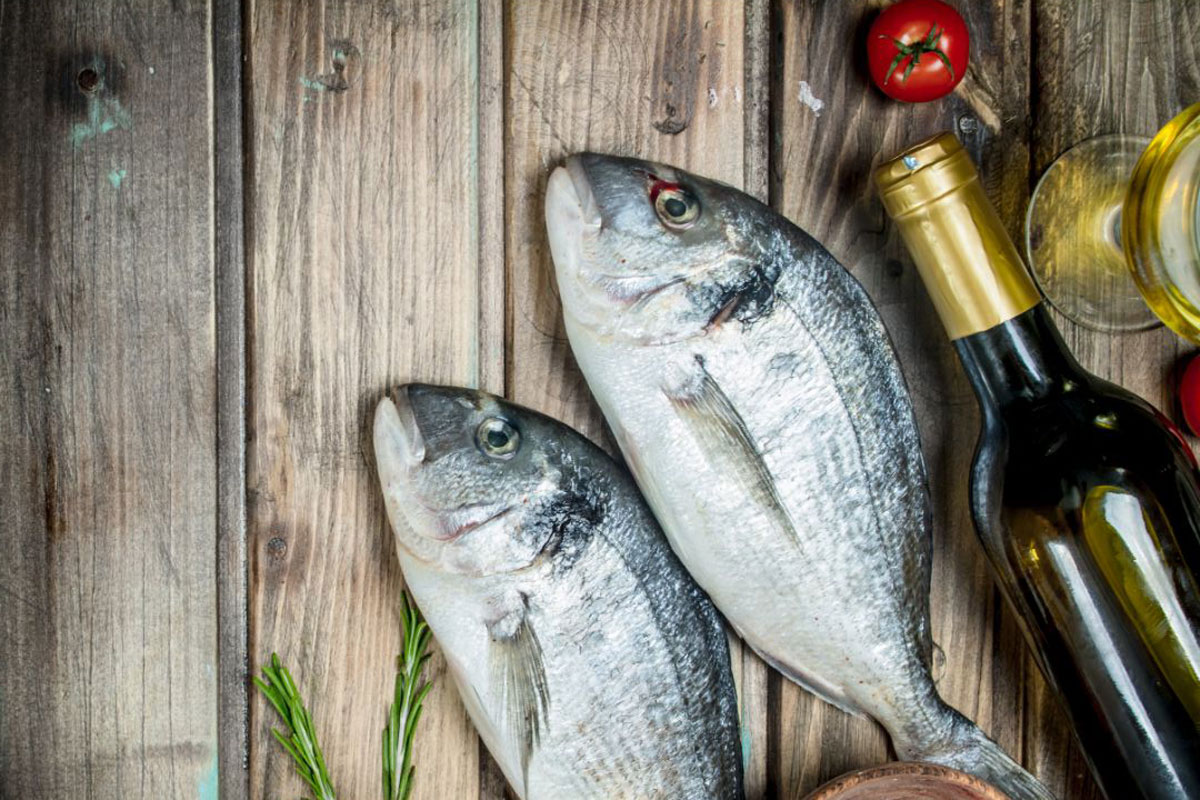
In the past, wines crafted from Debit underwent a prolonged maceration process, aligning with the production techniques of other white grape varieties in Dalmatia during that era. The renowned yellow wines of the time, while emblematic of the life struggle and challenges of the population, were often characterised as inharmonious, excessively astringent, and unsuitable for consumption.
Today, the story has changed, and thanks to modern winemaking, Debit is one of the key Dalmatian players as it achieves a unique profile in the refreshing white wine category.
Food Pairing with Dalmatian Wine
Pairing Dalmatian wine with local dishes enhances the overall dining experience to the level you can almost transfer yourself to the Adriatic coast. Traditional dishes like Pašticada (slow-cooked beef) or Octopus Salad complement the flavours of Dalmatian wines, creating a harmonious fusion of tastes.
Whether enjoying a glass of Pošip with seafood or savouring Plavac Mali with hearty meats, understanding the ideal pairings enhances the enjoyment of Dalmatian wines. The versatility of these wines allows for diverse and exciting culinary combinations.
Traditional Dalmatian dishes
Apart from the fact that these are excellent dishes that are full of the aroma and smell of the Mediterranean, their specific method of preparation has proved as the healthiest in Europe and was recognised by UNESCO, placing it on the representative list of the world’s cultural heritage.
Favourable geographical conditions, such as the combination of sea, land and scorching sun, provide ideal opportunities for the production of local foods, so Dalmatian cuisine is unimaginable without olive oil, fish and seafood, and herbs, of which bay leaf, sage and rosemary are the most used.
We have selected five dishes you can try to reproduce in your own direction. Of course, the original ingredients are irreplaceable. Unlike them, authentic wines are more easily available. Therefore, we immediately suggested which wine would go with which dish – a perfect match.
Ideal pairings for different Dalmatian wines
Soparnik
Shredded chard leaves baked between two thin layers of the most basic dough: it is, in the simplest terms, soparnik, an autochthonous dish that has been prepared since the 15th century.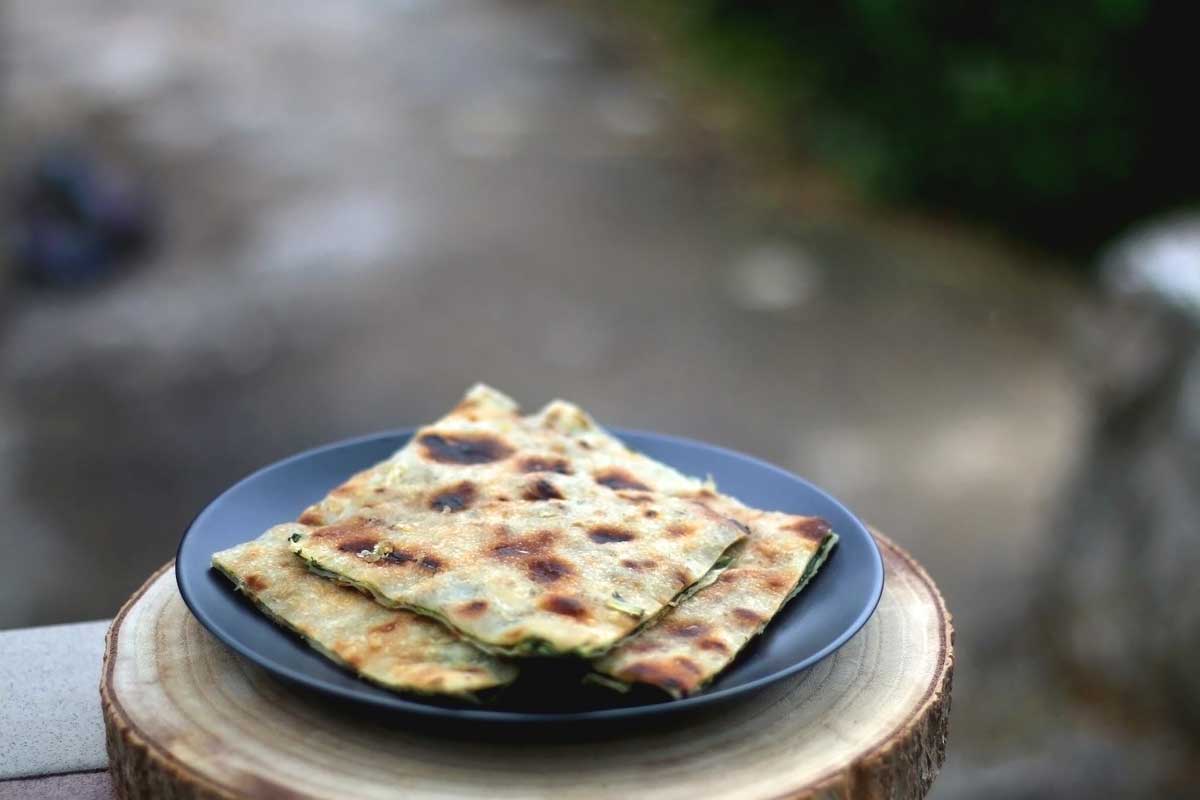
Ingredients:
For the Dough:
4 cups all-purpose flour
2-3 tablespoons olive oil
1 teaspoon salt
1 1/2 cups warm water
For the Filling:
2 pounds Swiss chard, finely chopped
1 large onion, finely chopped
2 tablespoons parsley, finely chopped
1/4 cup extra virgin olive oil
Salt and pepper to taste
Instructions:
For the Dough:
- In a large mixing bowl, combine the flour and salt. Make a well in the centre and add the olive oil.
- Gradually add warm water to the flour, mixing continuously until a dough forms.
- Knead the dough on a floured surface for about 10 minutes or until it becomes smooth and elastic.
- Divide the dough into two equal portions and shape them into balls. Coat each ball with olive oil, cover with a clean cloth, and let them rest for at least 30 minutes.
For the Filling:
- Combine the finely chopped Swiss chard, onion, parsley, and olive oil in a large mixing bowl. Season with salt and pepper to taste. Mix well.
- Preheat the oven to 400°F (200°C).
Assembling the Soparnik:
- Roll out one dough ball on a floured surface until it’s thin, resembling a large rectangular shape.
- Place half of the filling evenly over one-half of the rolled-out dough, leaving a small border around the edges.
- Fold the other half of the dough over the filling, pressing the edges to seal.
- Transfer the assembled soparnik to a baking sheet lined with parchment paper.
- Repeat the process with the second ball of dough and the remaining filling.
Baking:
- Bake the soparnik in the preheated oven for about 30-40 minutes or until the crust becomes golden brown.
- Once baked, remove the soparnik from the oven and let it cool for a few minutes.
- Cut the soparnik into squares or rectangles and serve warm
Pair Soparnik with: Testament Debit / Maraština
It’s one of those moments when you can’t believe something so seemingly simple performs so powerfully. When drizzling a bit of olive oil over the top of a still warm soparnik accompanies the bite with the most appropriate white wine imaginable – a white blend of local Debit and Maraština grape, the experience is complete. A vinous expression of wine brings another level of depth to it.
Gregada (Hvarska Gregada)
“Gregada”, a fish stew with minimal spices, is prepared on high heat, distinct from its relative, “brudet”. Believed to have originated with the ancient Greeks on the island of Pharos (Hvar), its name, Gregada, suggests it is derived from the local term for the Greeks (Grego).
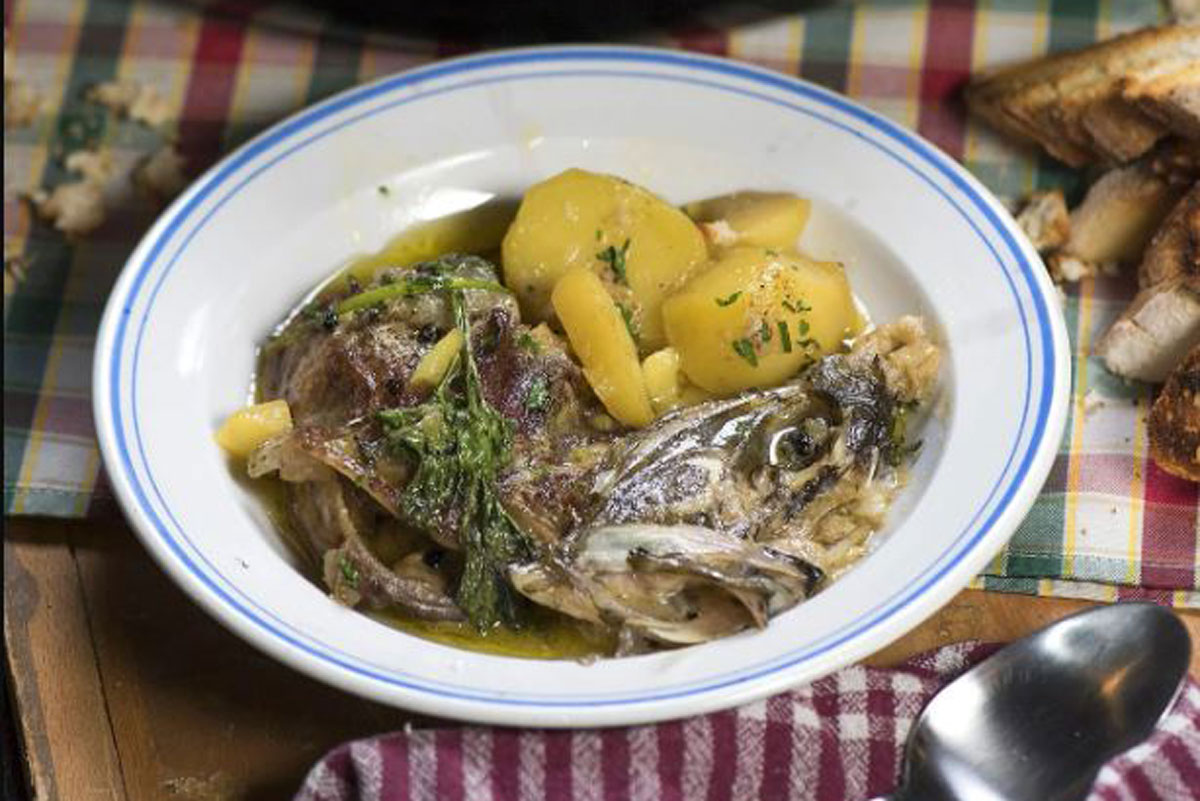
Ingredients:
2 pounds (about 1 kg) white fish fillets (e.g., grouper, sea bass, snapper), cut into chunks
1 pound (about 500g) potatoes, peeled and sliced
1 large onion, finely chopped
2 cloves garlic, minced
1/2 cup dry white wine
1/4 cup extra virgin olive oil
2 bay leaves
1 sprig rosemary
Salt and black pepper to taste
Fresh parsley, chopped, for garnish
Instructions:
- Heat olive oil over medium heat in a large pot or Dutch oven.
- Add the chopped onion and garlic. Sauté until the onion becomes translucent.
- Layer half of the sliced potatoes at the bottom of the pot.
- Place half of the fish chunks on top of the potatoes.
- Repeat the layers with the remaining potatoes, fish, and tomatoes.
- Pour the white wine over the layers.
- Season with salt and black pepper to taste. Add the bay leaves and rosemary sprig.
- Cover the pot and simmer over medium-low heat for 30-40 minutes or until the potatoes are tender and the fish is cooked.
- Once cooked, gently mix the ingredients without breaking the fish chunks.
- Remove the bay leaves and rosemary sprig.
- Serve the gregada hot, garnished with chopped fresh parsley.
Pair gregada with: Merga Victa Pošip
The substantial but vibrant presence of Merga Victa Pošip can accompany the delicate richness of the stew. The sea aromas of the stew will shine as if the wine is a perfect spice. Refreshing contrast enriches the experience, lifting it into a pure, concentrated fragrance. It will harmonise effortlessly with the light texture of the stew without overpowering it.
Komiška pogača
One of Dalmatia’s favourite traditional dishes or appetisers, also dates back to ancient Greece. This traditional Dalmatian savoury pastry originates from the islands of Vis.
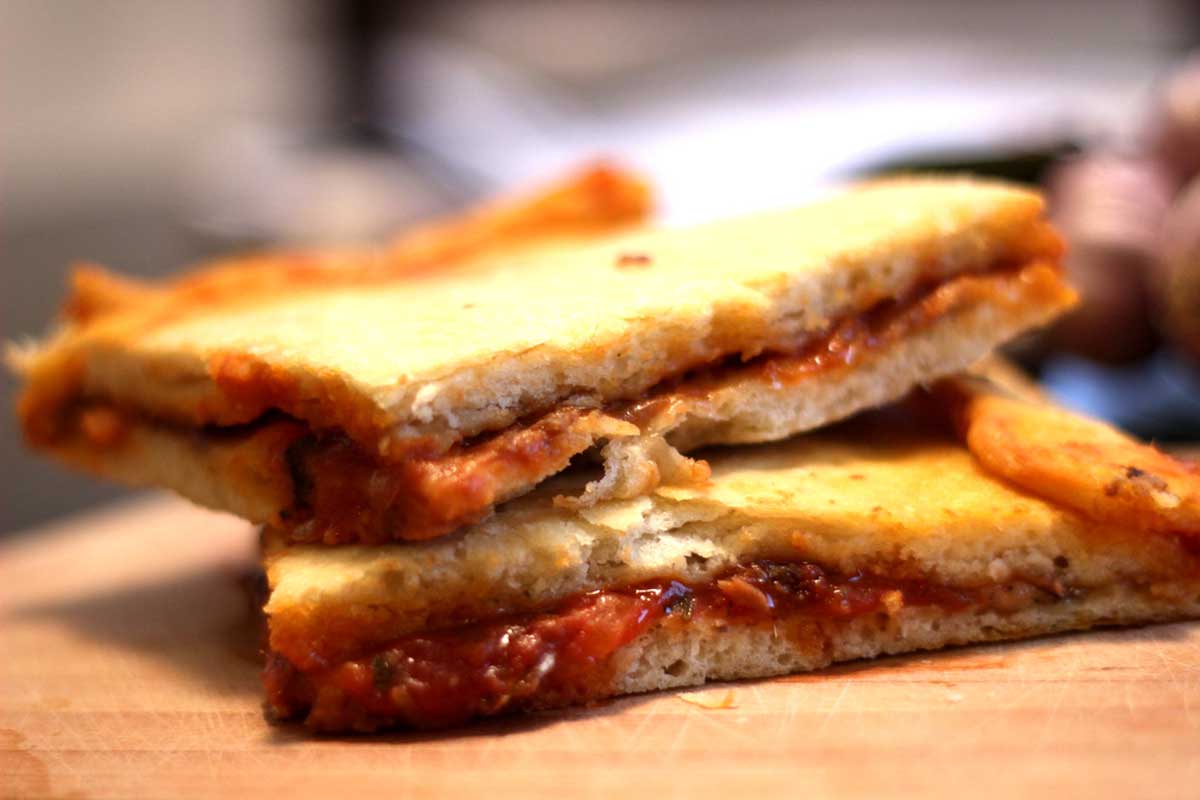
Ingredients:
For the Filling:
1 red onion
2-3 cloves of garlic
400 g of tomato peel
olive oil
4 sprigs of thyme
a couple of rosemary leaves
bay leaf
salt and pepper
50 g of olives and capers (pitted)
fresh oregano
10 – 15 pieces of salted anchovies (fillets)
100 g of dried tomatoes
For the Dough:
1 kg of strong flour
400 ml of lukewarm water
14 g of dry yeast (2 bags)
olive oil
salt
rosemary for decoration
Instructions:
- Take the flour, mix it with dry yeast, a little salt and olive oil.
- Slowly add lukewarm water.
- Mix the dough by hand in a bowl.
- Cover the bowl with a cloth and put it in a warm place to rise.
- Make the sauce for the scone by heating the pan and chopping the onion.
- Add olive oil and salt.
- Sauté the onion.
- Slice and add the garlic. Let’s mix.
- Add the tomato peels.
- We stew for ten minutes.
- Add a couple of rosemary leaves and a bay leaf. Add pepper and continue stewing.
- Divide the scone dough into 2 parts and roll it out. First the lower part, and then the cover. On the lower part of the dough, put the cooked salsa in the middle and spread it out.
- Take out the bay leaves.
- Slice the olives. Add some capers. Chop and add some dried tomatoes. Throw in the salted anchovies. Add some thyme and fresh oregano.
- Cover with the second part of the dough.
- Cut off the excess dough. Press the edges with a fork. Pierce the dough with the same fork and decorate with rosemary.
- Drizzle with olive oil and bake at 220 °C (428°F) for 20 to 25 minutes.
Pair Komiška pogača with: Dalmatian Dog Babić
The slightly lighter body and fruity character of Dalmatian Dog Babić wine can enhance the flavours of Komiška pogača by providing a refreshing contrast to the savoury and salty elements. In this case, a proper wine is a necessity in order to fully experience the culinary tradition and this particular Babić complements the overall texture of Komiška pogača without competing for dominance. An affordable treat, just like it’s supposed to be.
Pašticada with Gnocchi
The queen of Dalmatian cuisine is served at all important events, such as weddings, holidays or christenings, and is true proof that Dalmatians, in addition to fish and seafood, really know how to make delicious meat delicacies!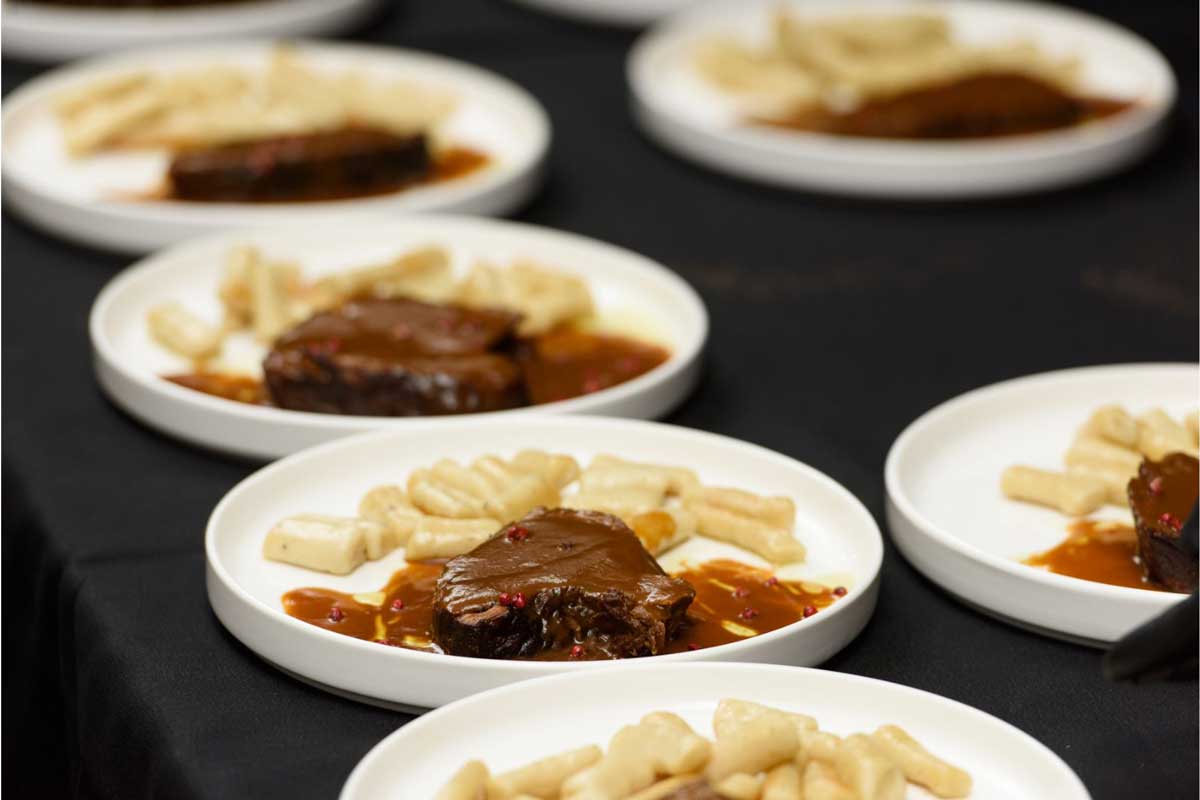
Ingredients:
For the Pašticada:
2 pounds (about 1 kg) beef roast, preferably round or rump
4 cloves garlic, minced
4 slices bacon, chopped
2 carrots, peeled and sliced
1 onion, chopped
2 tablespoons tomato paste
2 cups red wine
1 cup beef or vegetable broth
1 cup water
1 teaspoon ground cloves
1 teaspoon ground cinnamon
Salt and black pepper to taste
Olive oil for cooking
1 cup dry plums (prunes), pitted
For the Gnocchi:
2 pounds (about 1 kg) potatoes, peeled and boiled until tender
2 cups all-purpose flour
1 egg
Salt to taste
Instructions:
For the Pašticada:
- Make small incisions in the beef roast and stuff them with minced garlic. Season the roast with salt and black pepper.
- Heat olive oil over medium-high heat in a large pot or Dutch oven. Sear the beef on all sides until browned. Remove the beef and set it aside.
- In the same pot, add chopped bacon, carrots, and onion. Sauté until the vegetables are softened.
- Stir in the tomato paste and cook for a couple of minutes until it darkens in colour.
- Place the seared beef back into the pot. Pour in the red wine, beef or vegetable broth, and water. Add ground cloves and cinnamon. Bring the mixture to a boil.
- Reduce the heat to low, cover the pot, and simmer for about 2.5 to 3 hours or until the beef is tender. Occasionally check and add more water if needed.
- Add the pitted dry plums to the pot about 30 minutes before the beef is done and continue simmering.
- Once the beef is cooked, remove it from the pot, slice it, and arrange it on a serving platter with the dry plums.
For the Gnocchi:
- While the beef is simmering, prepare the gnocchi. Mash the boiled potatoes until smooth.
- In a large bowl, combine the mashed potatoes with flour, egg, and salt. Mix until a dough forms.
- On a floured surface, roll the dough into ropes and cut them into bite-sized pieces.
- Bring a large pot of salted water to a boil. Drop the gnocchi into the boiling water and cook until they float to the surface.
- Remove the cooked gnocchi with a slotted spoon and transfer them to a serving dish.
Pair Pašticada with: Testament Babić
Rich red wine is a must for a truly indulging Dalmatian Pašticada experience. This fuller-bodied expression of Babić grape comes from Jadrtovac, near Šibenik in North Dalmatia. Powerful enough to keep up with pašticada, with gentle tannins that send every bite into a persistent flavour explosion.
Oven-Baked Lamb Peka
While a traditional baking bell or “peka” adds a unique flavour to the dish, you can still recreate the essence of Peka in home conditions using an oven. Here’s a simplified version of Lamb Peka that you can prepare without the traditional baking bell.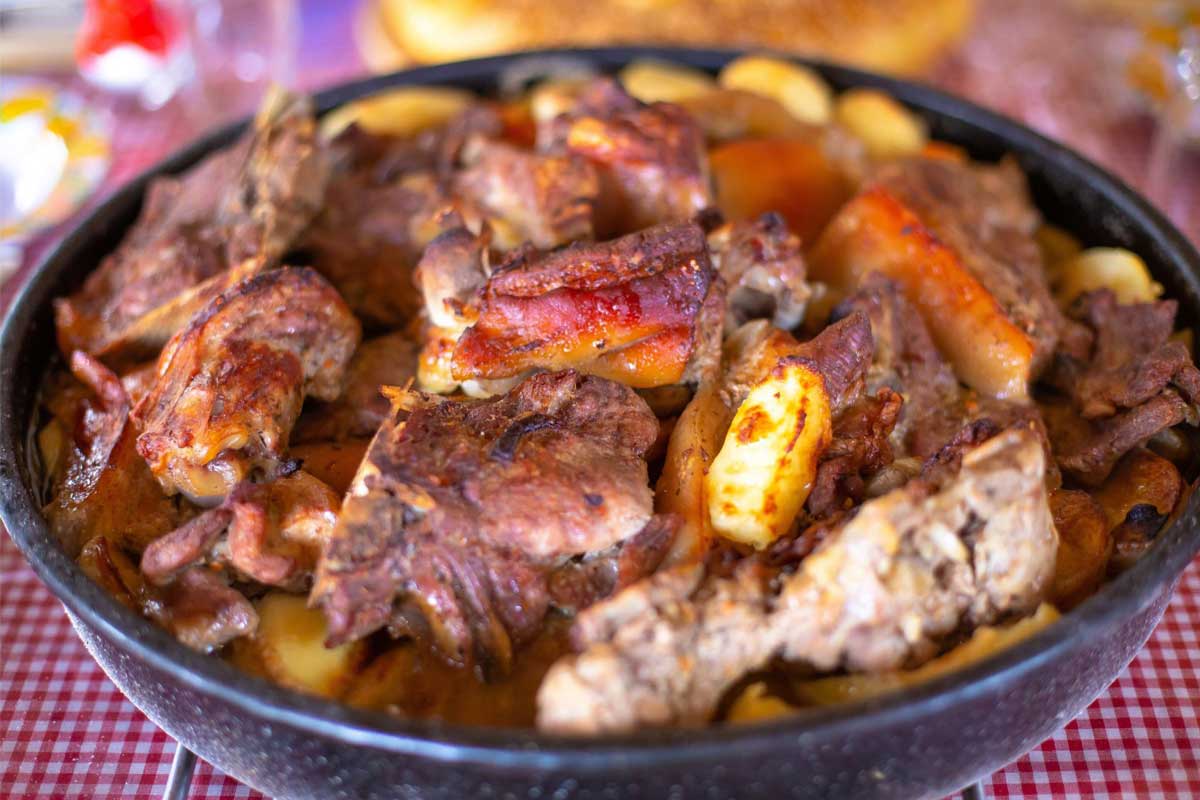
Ingredients:
1 whole lamb shoulder or leg (about 3-4 kg), cut into pieces
5-6 large potatoes, peeled and sliced
4 large onions, sliced
4 carrots, peeled and sliced
6 garlic cloves, minced
2 sprigs of rosemary
1 bunch of fresh parsley, chopped
1 cup olive oil
1 cup white wine
Salt and black pepper to taste
Instructions:
- Marinate the Lamb: Rub the lamb pieces with olive oil, minced garlic, chopped parsley, salt, and black pepper. Let it marinate for at least 2 hours, or overnight for better flavor.
- Prepare the Vegetables: Peel and slice the potatoes, onions, and carrots. In a large bowl, toss the sliced vegetables with olive oil, salt, and pepper.
- Preheat the Oven: Preheat your oven to 350°F (180°C).
- Layer the Ingredients: Place the marinated lamb pieces at the bottom in a large roasting pan or Dutch oven. Arrange the sliced vegetables over the lamb. Add rosemary sprigs for flavour.
- Add White Wine: Pour white wine over the lamb and vegetables to add moisture and flavour.
- Cover and Bake: Cover the roasting pan or Dutch oven with a tight-fitting lid or aluminium foil. Place it in the preheated oven and bake for approximately 2.5 to 3 hours.
- Check for Doneness: Check the lamb for tenderness; it should easily fall off the bone. Ensure the vegetables are soft and infused with the lamb’s juices.
- Serve: Carefully remove the cover and present the lamb and vegetables on a serving platter. Garnish with additional fresh parsley if desired.
- Enjoy: Serve the oven-baked lamb Peka with your favourite side dishes, and relish the rich flavours reminiscent of the traditional Croatian dish.
Pair Oven-baked lamb with: Testament Zenit Pošip
The Zenit Pošip, crafted with a traditional approach, presents a unique profile that makes it an exceptional pairing with Lamb Peka. Zenit Pošip, with its aromatic richness, mineral complexity, freshness, and integrated oak ageing influence, is a perfect companion to the hearty and flavorful Lamb Peka, creating a symphony of tastes that harmonise with the essence of Dalmatian gastronomy. A perfect example of how a knowledgeable pick of a structured white wine, instead of customary red wine and lamb pairing, can create an unexpected pleasure.




















